6 of the best US destinations for a winter hiking trip (without the snow)
Make like a snowbird and fly south by southwest, but pack your hiking boots to take advantage of these gorgeous walking destinations

Winter hiking trips conjure up images of rosy cheeks, plumes of breath billowing in the frosty air and snow crunching underfoot. For some of us, it’s a version of paradise, but not everyone appreciates the joys of snowy hiking.
While it’s true that lots of the best hiking destinations in the US – Colorado, Utah, Vermont – require a good pair of snowshoes and a warm down jacket for winter hiking, there are places where you can discover gorgeous trails in your hiking boots and not worry about frostbite while you're at it.
We’ve rounded up some of the best places in the US for a winter hiking trip where you can shed some layers and keep moving year-round. Bring a decent pair of hiking shoes and remember your hiking layers – a lightweight merino wool base layer, a fleece jacket and waterproof jacket – just in case the weather is brisker than you expect.
1. Kauai, HI
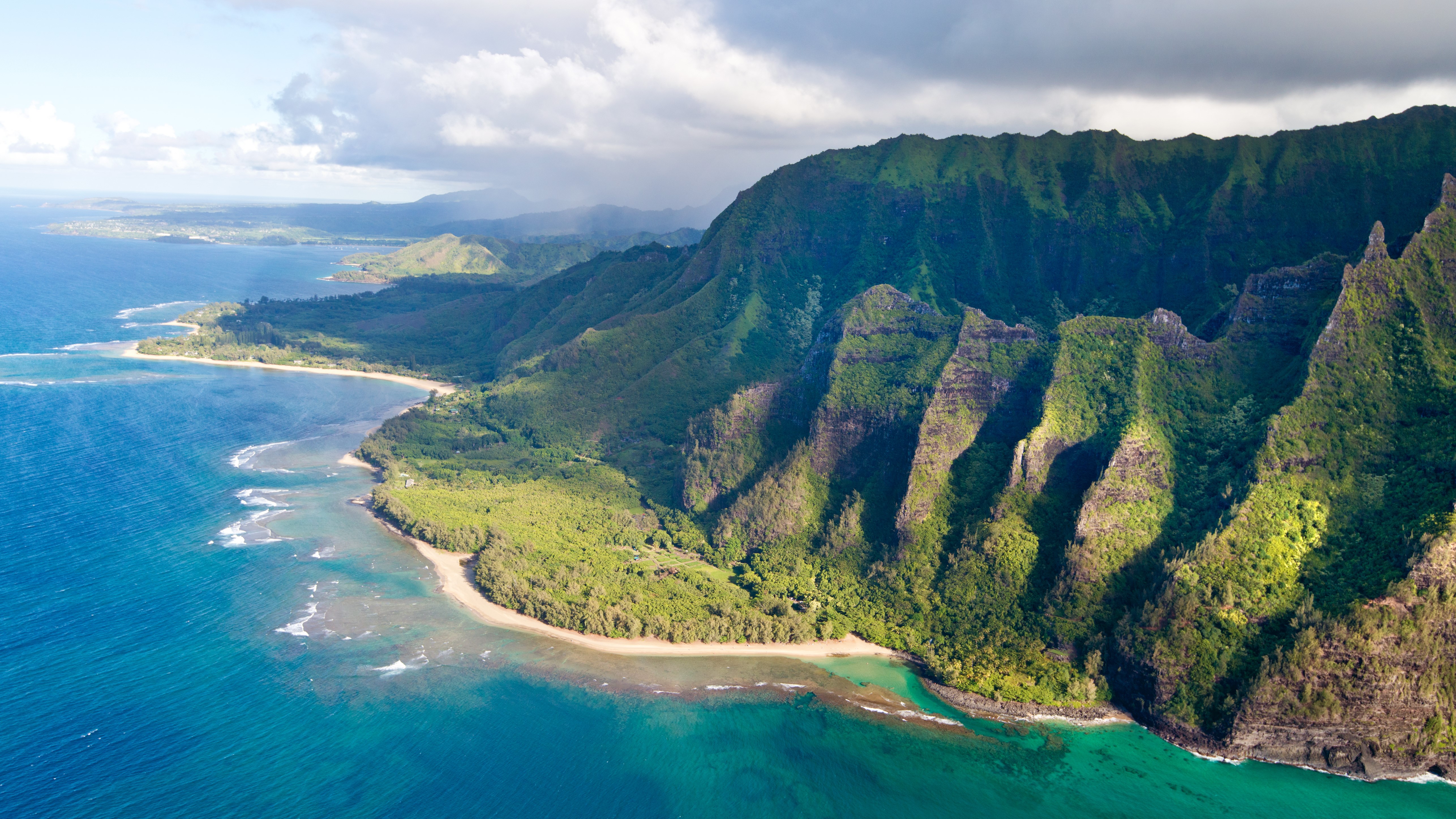
If you’re serious about getting away and beating the winter blues, there’s no better healing salve for a cold soul than hopping aboard a light to Hawaii, but you don't have to go all White Lotus to have a good time.
Though winter is rainy in Kauai, the daytime highs are also in the low 70s, so you’ll be quite comfortable with a waterproof jacket.
Once you arrive, most of the island is inaccessible by road, so the best way to explore this lush paradise is on foot. You’ll find some of the most iconic scenery along the Nāpali Coast, one of the most recognizable and spectacular coastlines in the world.
The Pali are lush, high cliffs that rise up to 4,000 feet from the Pacific Ocean. Abundant waterfalls and streams continue to carve deep valleys into the Pali as they flow down to the ocean. Hiking along the coast is a truly magical experience and a dream for wildlife lovers and bird watchers, so don't forget your binoculars.
All the latest inspiration, tips and guides to help you plan your next Advnture!
2. Big Bend National Park, TX
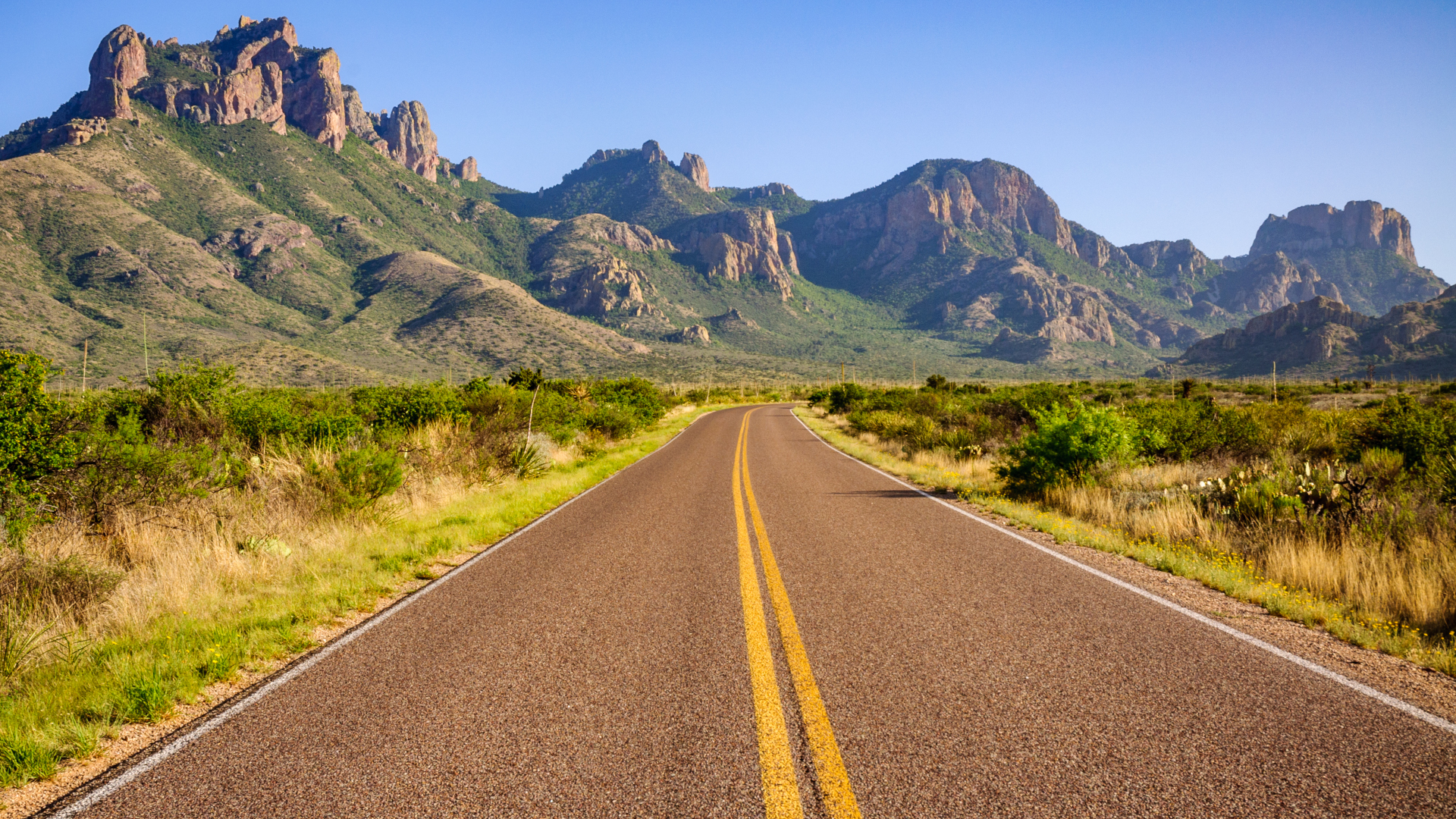
If you’re seeking a true backcountry adventure, you’ll find all the rugged remoteness you can get your boots on down in Big Bend, where comfortable 60 degree highs make it one of the best National Parks to visit in winter.
Down at the bottom end of the state, this Texas National Park is so hard to reach that it’s well off most people’s radar, but this fabulous desert landscape is a favorite amongst those who love hiking off the beaten track. Big Bend is home to the Chisos mountain range and much of the Chihuahuan Desert. You can hike through the shallow waters of the Santa Elena Canyon Trail, Big Bend’s answer to The Narrows, and along the high ridges of the Lost Mine Trail, backpack in the Chisos Mountains, float along the Rio Grande river admiring the steep limestone cliffs and soak in the Langford Hot Springs.
Bring your tent, or book in at the Chisos Mountains Lodge, and make sure you get outside after dinner – this park has the least light pollution of any of the National Parks in the lower 48 states, making it a prime spot for stargazing. At night, you can enjoy their Night Sky program, featuring star parties and moonlight walks.
3. Tucson, AZ
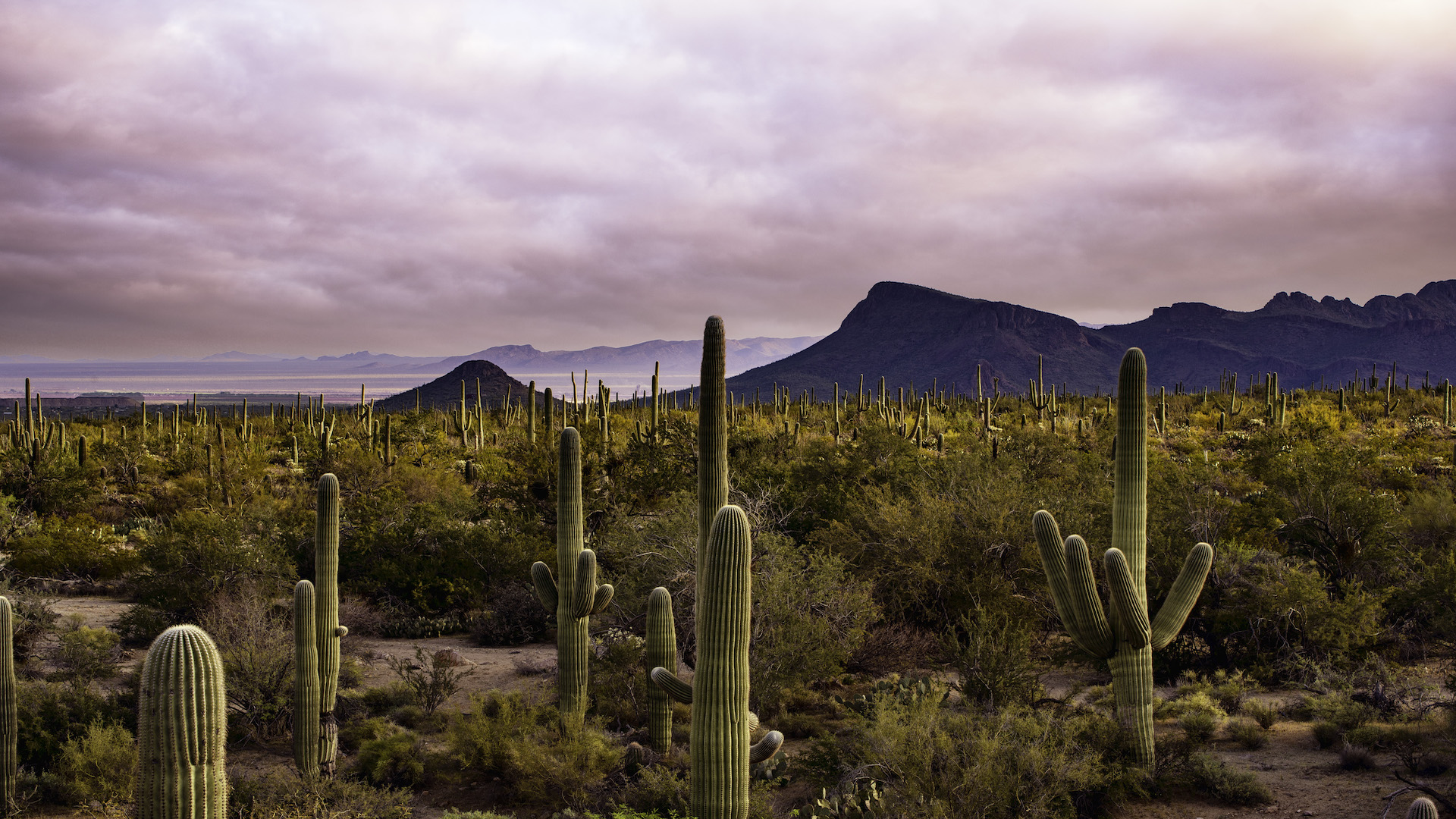
Down in southern Arizona, the vibrant city of Tucson enjoys warm winters with daily highs averaging in the upper 60s and even the low 70s. Better yet, the city is straddled by Saguaro National Park, named for the giant cacti that is the universal symbol of the American west. You’ll see saguaros here in the thousands framed by picture perfect skies and glorious sunsets.
In addition to great desert hiking trails and mountain peaks, his small desert park is considered one of the best parks in the country to see wildlife such as rattlesnakes, lizards and tortoises as well as the venomous Gila Monster reptile.
Make Tucson your home base and you can spend your afternoons exploring this multicultural city by streetcar, visit the botanical gardens and enjoy some mouth watering southwestern cuisine.
4. Big Sur, CA
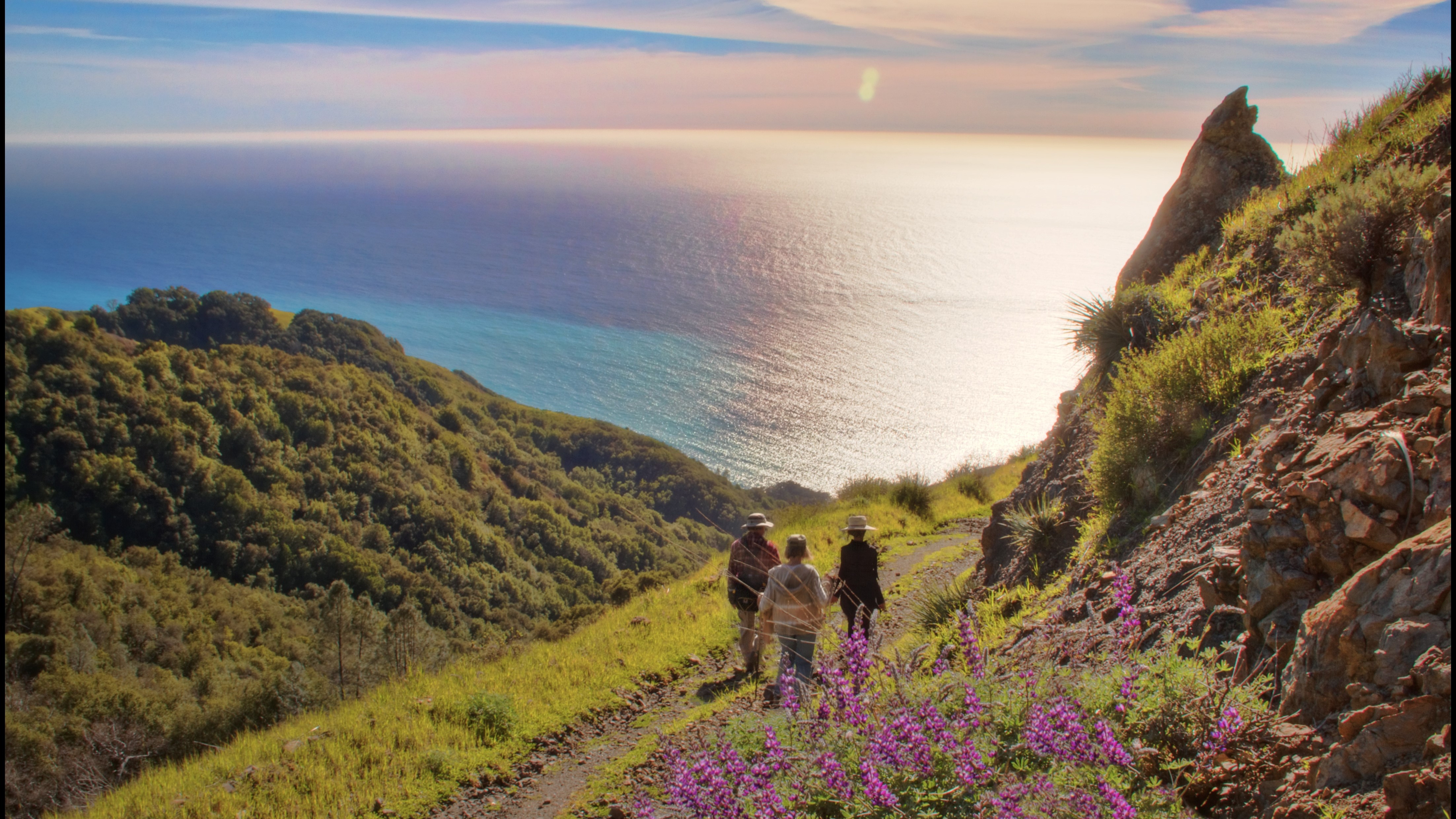
If you’re seeking some solace by the sea, head for the misty cliffs of Big Sur, the rugged stretch of California’s central coast between Carmel and San Simeon where you enjoy winter temperatures in the low 60s. The best hikes are around Ragged Point and feature dramatic waterfalls, coastal paths and temperate rainforests.
Find lodging in the nearby seaside towns of Carmel-by-the-sea or Monterey, both just over half an hour away, and you can enjoy a winding scenic drive down Highway 1 to get to the trailhead, then head back for beach walks, shopping and, of course, wine tasting.
5. Sedona, AZ

Though hiking in Arizona in the summer months can be, literally, deadly, its mild-to-warm winter temperatures make for perfect hiking conditions, especially for those who are cold averse. Stunning Sedona enjoys winter time highs in the 60s and little snowfall, ideal for exploring the magnificent red-rock buttes, deep canyons and pine forests that surround the New Age town as well as scrambling up the ever-popular Cathedral Rock climb.
When your legs have had enough, head back into town and enjoy a yoga class or a massage at one of the many spas, browse the art galleries or check out the Sedona Crystal Vortex if you’re in need of some mystic vibes.
6. Las Vegas, NV
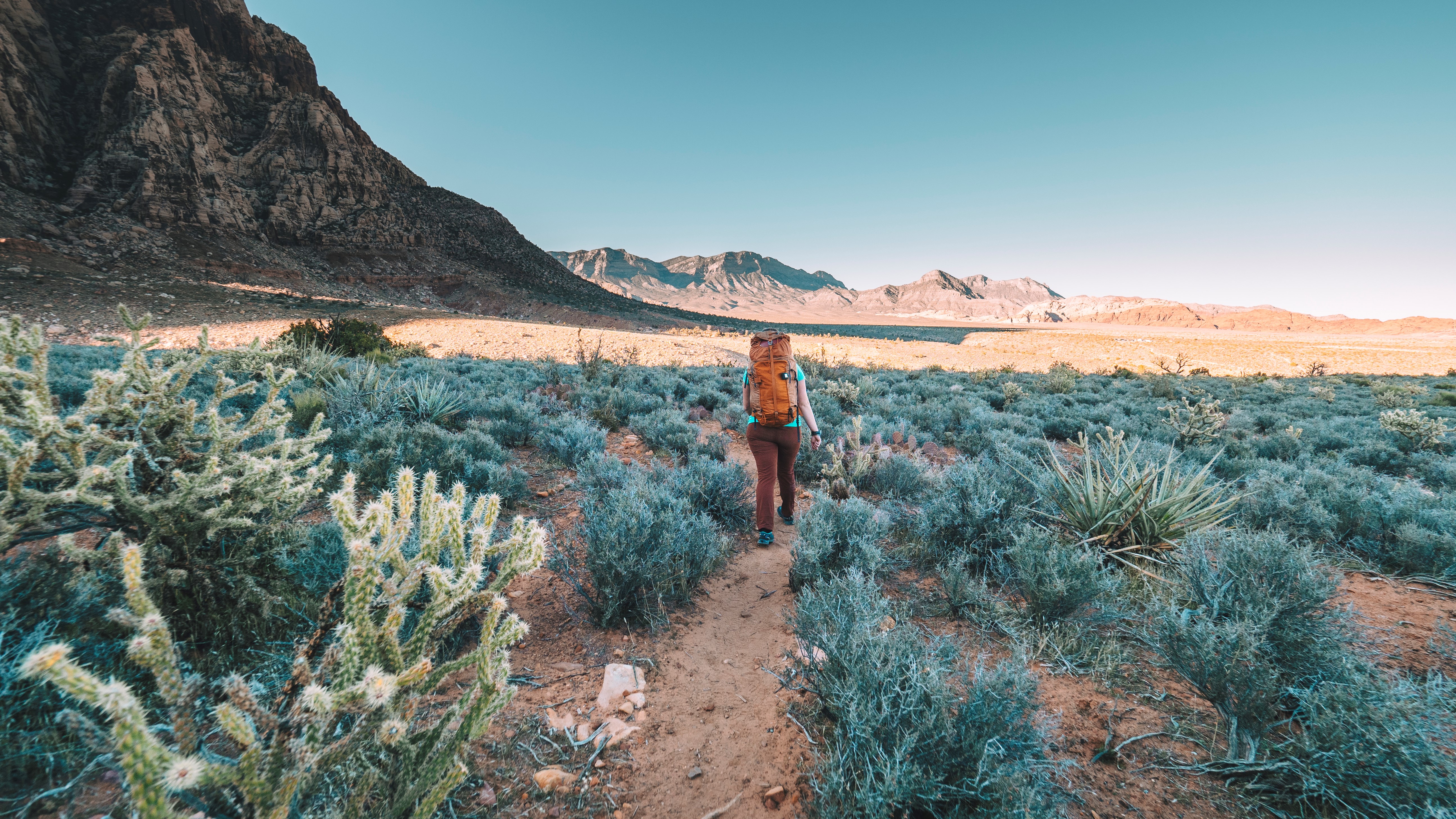
For obvious reasons, Vegas often gets overlooked as a hiking destination, but take just a short drive from the strip and you’re on another planet, one where the types of red rock landscapes you probably associate with Utah stretch for miles.
In half an hour, you can be in Red Rock Canyon. In just over an hour, you can be at Valley of Fire State Park and if you’re willing to drive for two hours, you’ll get to Red Cliffs National Conservation Area. Each of these desert gems delivers stark, breathtaking beauty, ample hiking trails and there’s plenty of time to get back to the bright lights of Vegas for dinner and show.
Julia Clarke is a staff writer for Advnture.com and the author of the book Restorative Yoga for Beginners. She loves to explore mountains on foot, bike, skis and belay and then recover on the the yoga mat. Julia graduated with a degree in journalism in 2004 and spent eight years working as a radio presenter in Kansas City, Vermont, Boston and New York City before discovering the joys of the Rocky Mountains. She then detoured west to Colorado and enjoyed 11 years teaching yoga in Vail before returning to her hometown of Glasgow, Scotland in 2020 to focus on family and writing.

